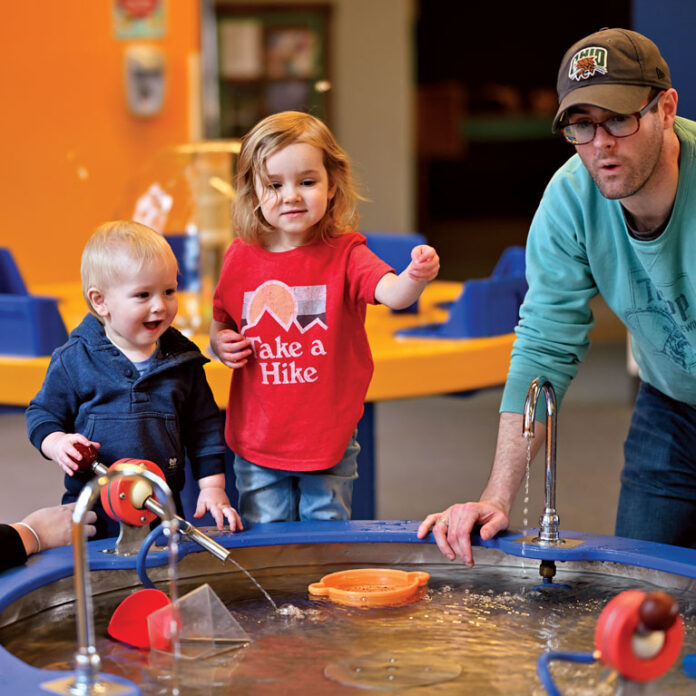“Although visitors can and do respond to new and novel experiences, they primarily attend to those things that help them accomplish their original visit goals. For example, the Explorer finding something new and/or novel to experience, the Recharger finding that bit of peace and/or transcendence they are looking for or the Experience Seeker seeing the things that make this area or collection special. When this happens, then the experience is not only satisfying but memorable.
“Research in psychology has consistently demonstrated an association between memory and emotion. Emotionally arousing events are likely strongly remembered because of the increased activation of the brain’s limbic system, which has been correlated with enhanced explicit memory for both pleasant and unpleasant events. Recent research by Falk and Gillespie and Staus has confirmed the important role of emotion in museum memories and learning. But what is the connection between emotion and identity-related motivations? As outlined elsewhere, the events most likely to have emotional salience for visitors are those that satisfy their needs and interests; in other words, their entering identity-related motivations. Such appears to be the case illustrated in our sample transcript. Although the exhibit described by our father on making a film ‘scary’ was probably, in and of itself, not the most ‘exciting’ exhibit at the museum, and thus emotion-laden, the fact that it emerged as the exhibit that enabled him, on this day, to successfully enact his identity-related goal of engaging his son in an educational experience, made it an emotionally exciting experience for him as a Facilitating father. Thus if I am visiting as a Facilitator in order to ensure that my son or daughter has a great museum experience, seeing my son or daughter enjoying him/herself will light up my limbic system. The same holds true for visitors with other identity-related visit motivations,” (Falk, p. 119-121).
“They identified five museum-specific identities reflecting visitor motivations: explorer,
facilitator, professional/hobbyist, experience seeker and spiritual pilgrim, later renamed
recharger, by Falk (2009).
“Each identity reflects different motivations for visiting the museum. Specifically:
- Explorers are driven by their personal curiosity, their urge to discover new things.
- Facilitators visit the museum on behalf of others’ special interests in the exhibition or
the subject-matter of the museum. - Experience seekers are these visitors who desire to see and experience a place, such
as tourists. - Professional hobbyists are those with specific knowledge in the subject matter of an
exhibition and specific goals in mind. - Rechargers seek a contemplative or restorative experience, often to let some steam
out of their systems.
“It should be noted that visitor social grouping types do not imply one specific identity at
all cases. The most common misconception, as Falk notes (2009), involves the family.
Coming to the museum as a family does not mean that members of this group, and
especially the parents, carers, or adults in charge of the group, belong to the Facilitator
category. They may for example quickly disperse, with each of the members becoming
an explorer addressing their personal fancies, rejoining the group only at the end of
the visit. Shifting identities can also occur while paying a visit and hence one can be a
facilitator as well as an explorer and so forth (Falk 2009),” (Christidou, 2010).
Dr. Falk’s research on visitor archetypes and motivations has a global impact on the museum industry. Proposing ways for these institutions to categorize visitors provides a simplifying tool for understanding the people they serve, used by on various scales from the Ohio History Connection to the Smithsonian, to the Danish Agency for Culture and Palaces. If the Ohio Department of Natural Resources truly wants to influence visitor behavior in parks for the benefit of the environment, understanding what gets different visitors to act is key. In my partnership with ODNR, I plan to use the archetypes proposed by Dr. Falk as a research tool.
I think this way of framing visitor motivation will be especially useful when organizing co-design sessions. Randomly matching participants with others can spark conflict in quick activities, and if that is something I decided I want to avoid in the short sessions, organizing participants according to visitor archetype could help participants have richer, more in-depth discussions that expose more highly specific insights. In the long run, these insights would allow me to design solutions that benefit visitors and ODNR park management.
References
Christidou, D. (2010). Re-Introducing visitors: Thoughts and discussion on john
falk’s notion of visitors’ identity-related visit motivations [PDF].
Papers From the Institute of Archaeology, 20(0). https://doi.org/10.5334/
pia.344
COSI. (n.d.). [Kids playing at museum exhibit with adult]. COSI Center of Science
and Industry. https://cosi.org/MOBILEAPP/storytelling/index.php
Falk, J. (n.d.). Understanding museum visitors motivations and learning [PDF].
https://slks.dk/fileadmin/user_upload/dokumenter/KS/institutioner/museer/
Indsatsomraader/Brugerundersoegelse/Artikler/
John_Falk_Understanding_museum_visitors__motivations_and_learning.pdf




